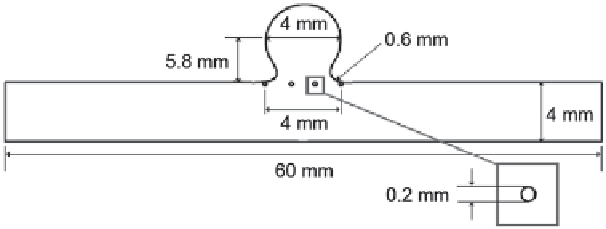Biomedical Engineering Reference
In-Depth Information
7.4.3
Computational Modelling and Numerical Details
7.4.3.1
Geometric Domain
The computational domain of the aneurysmal model is shown in Fig.
7.23
. The
parent vessel and the aneurysmal sac are set at 8 and 5 mm in diameters respec-
tively. The flow enters the vessel with no obstacle and swirl within the aneurysm.
For the stented artery, the aneurysmal flow velocity is reduced due to the stent struts
obstructing blood movement. For simplicity, the velocity boundary condition that
was applied at the arterial entrance assumes a uniform profile and has a direction
that is normal to the surface. The artery is modelled long enough so that towards the
exit of the vessel, a zero pressure gradient boundary condition along the length of
the artery is implemented.
A close-up view of the mesh for this aneurysmal vessel (Fig.
7.24
) shows the
variation of tetrahedral cells at the aneurysmal wall and around the stent struts. A
domain size of more than 6k cells is generated. A mesh independence study was car-
ried out to ensure an optimum mesh for resolving the flow gradients.
Blood flow through the arterial vessel is assumed incompressible, homogeneous,
laminar, and Newtonian. The fluid properties are reported in Table
7.7
. Typical val-
Fig. 7.23
Dimensions of aneurysm model
Fig. 7.24
Computational
mesh of aneurysm model


Search WWH ::

Custom Search